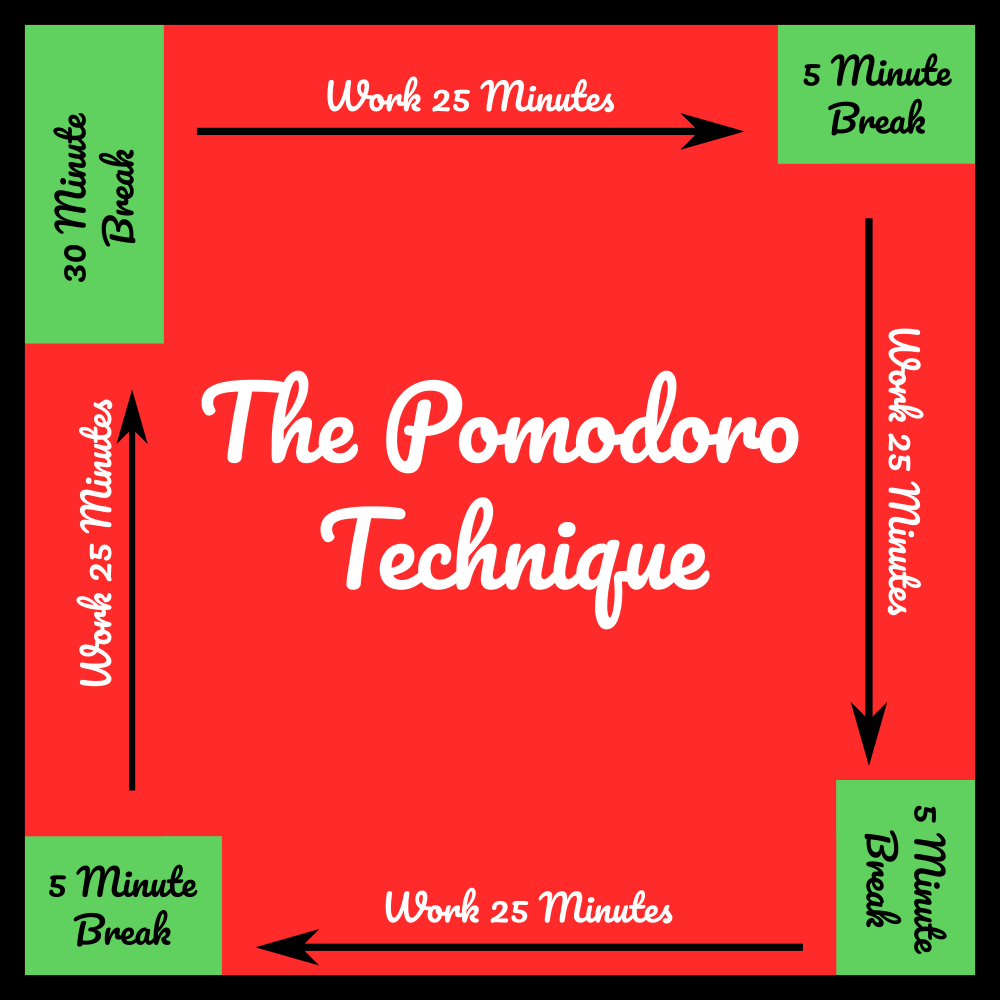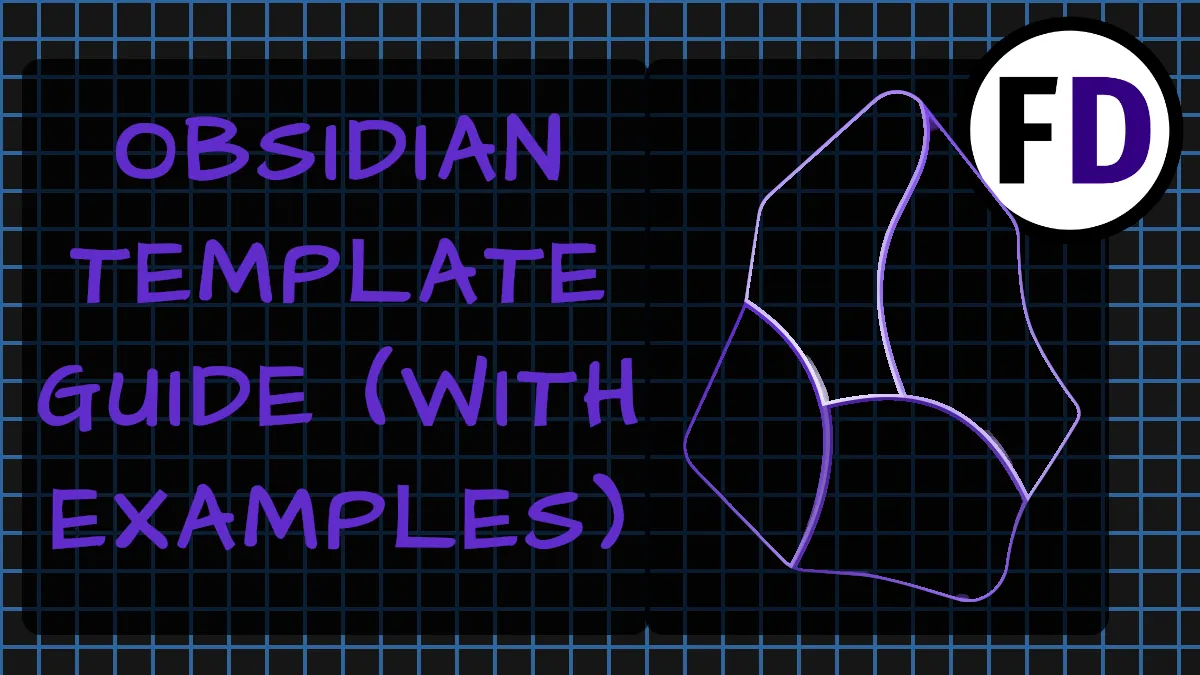There are some people who swear by it and can’t get through the day without it. Love it or hate it, there’s no denying that The Pomodoro Technique has made a huge impact on the productivity space. With so many conflicting ideas out there, I decided I wanted to answer the question once and for all, Is the Pomodoro Technique Effective?
Recently I have used the technique everyday to get my work done.
What Is The Pomodoro Technique

To those unfamiliar with the productivity, time management and task tracking sphere, the Pomodoro Technique can seem like a strange practice. Tomato timers, time-blocking, focus sprints, it’s easy to see why people get confused.
The basics of The Pomodoro Technique are actually really simple though, it’s just working for 25 minutes and then taking a 5 minute break. The word Pomodoro is just the name we give to a 25 minute session of work.
After 4 Pomodoros you take a longer break, usually between 15 and 30 minutes. Don’t make the mistake of doing the wrong things during you break, choose something from this list!
In the real world, using the Pomodoro Technique for 5 hours would yield you 4 hours of focused work time and an hour of rest time.
Does The Pomodoro Technique Only Work For Students?
Francesco Cirillo originally created the Pomodoro Technique when he was a student, struggling to study. He wanted to see if he could study hard for just a short amount of time because he found he wasn’t able to fight his mental resistance when it came time to start studying every day.
Studying for exams or doing homework is certainly not the most exciting thing for students to be doing. Online gaming, streaming services, social media and meeting friends require so little effort now that getting into the right mindframe to study can be really difficult. This is why the Pomdodoro Technique is so highly adopted by students, it lowers the barrier to start studying.
The prospect of finishing an essay, thesis or chapter can be overwhelming, so much so that it makes you not want to start. But doing 25 minutes of work is something that anyone can achieve. It takes a hard task and makes it easy to get started.
But this doesn’t mean that the technique is best only for students. The tasks that students need to get done are very similar to the tasks and projects of the careers of employees in all sorts of industries.
- Reading
- Writing
- Discussing
- Learning
Sound Familiar? These are the building blocks of all work, whether you’re a student or not. Many people have tasks or projects they do for either their jobs or their personal time that could get benefits from The Pomodoro Method.
Who Else Is The Pomodoro Technique A Best Fit For?
- The Easily Distracted – If you are constantly distracting your self by checking notifications or going off on tangents while you are working, then the technique may work well for you. Just remember to get rid of all possible distractions before you set the timer!
- The Procrastinator – If you have goals you want to achieve but find yourself not making progress because you always have something else to do, the technique may work well for you. You can still do those other tasks, but do a Pomodoro of work first!
- The Lazy Bones – Tell yourself you are just going to work on your task for 25 minutes, that’s it. After the timer goes off you’ll realize it really wasn’t as scary as you though it would be. Try to do 2 Pomodoros next time and work up to a full cycle of four.
Is The Pomodoro Technique Effective For Coders?
As discussed above, there are a huge number of people that can use The technique to effectively increase their productivity each day. But that doesn’t means it works for everyone.
Writing code is a task that requires deep focus for extended periods of time. Concentration is king in the coding world where computer programmers will often spend huge swaths of time coding. 8 hour coding sessions are not uncommon and for good reason, interruptions can be productivity killers when you’re deeply engaged in a task.
Imagine you were half way through fixing a bug that you couldn’t quite figure out. You’re making progress at finding the problem and then RING! The Pomodoro timer goes off and you have to stop what you’re doing and walk away for five minutes. Not ideal.
Sitting back down 5 minutes later you need to figure out where you were and try to get back into that frame of mind.
No, The Pomodoro Technique is not the best technique for coders writing a program or other people that need to do long sessions of complex work. It just doesn’t allow you to go deep enough.
Which Tasks Get More Productive With The Pomodoro Method?
How effectively The Pomodoro Technique works really depends on what you are doing. If the task can be easily broken into 25 minute chunks, it will be beneficial to use the technique.
Studying a chapter of a textbook for example, is easily split into 25 minute sessions. You give yourself a certain number of pages to do each Pomodoro and when you reach 25 minutes, the timer goes off and you take a break. After your five-minute break start off where you were for the next Pomodoro.
On the other hand, if you’re doing statistical analysis, you might not want to take breaks in the middle of it and forget where you were. After breaks you would need to review what you had done before you could continue.
You wouldn’t want to use the Pomodoro Technique for cooking a large meal either, you can’t just take breaks every 25 minutes when you have things in the oven or on the stove.
You just need to use a little common sense to work out if The Pomodoro Technique will be helpful for your task or not. If you’re unsure ask yourself these questions.
- How long will this task/tasks take?
- Can I break it into 25 minute chunks?
- Will I loose progress if I take a break?
So what tasks is the Pomodoro Technique Good For?
- Studying
- Reading
- Writing
- Cleaning
- Practicing a Skill (Guitar, Juggling etc)
- Replying to Email
- Project & Task Planning
Advantages and Disadvantages of The Pomodoro Technique
Interrupting Flow
The biggest disadvantage to the Pomodoro Method is that when the timer goes off, it interrupts your flow state.
Studies have shown that the most productive people are those that go into a state of flow when they work. You know the feeling, when time seems to stand still, and you become completley engrossed in what you’re doing. When you’re in the state the work seems easy, like you don’t even have to try. The last thing you want is an alarm jerking you from your flow state!
Easy to Start
Knowing that you only need to work for 25 minutes is a great motivator. It destroys procrastination and the fear of getting started.
Most productivity systems know the value of breaks large tasks down into smaller bite sized tasks. In GTD, the mantra “What’s the next action” forces people to focus on only the next thing they have to do thereby reducing the anxiety involved in starting a huge project. The technique achieves the same thing with it’s 25 minutes of focused work sessions.
Time Specific Tasks
If you’re using the traditional pomodoro times of 25/5 you will run into problems when you have time specific tasks.
Perhaps you have a 40 minute study session between classes or your boss gives you 15 minutes notice that he needs a update which requires you writing a short report.
In the Pomodoro Technique Cirillo is very specific on how to use it. You should never stop before the timer goes off and should never continue after it. So if you have a time specific task which is more or less than 25 minutes, you can’t use the original Pomodoro Method.
There is an answer though.
Solve Pomodoro Problems With Flowtime
Whether you want to use the technique to help you study, for writing reports or just to help you get through the myriad of tasks you have to do today, there are ways to make it more effective. The easiest way to do this is to use pomodoros cousin, flowtime.
Flowtime is essentially the same as the pomodoro technique with one key difference – you decide the times. Using flowtime helps you because you can increase the time of your rests and work sessions.
Increase The Time Of Your Pomodoros
The most common complaint I hear online when people are discussing whether or not the Pomodoro technique is effective is that 25-minutes is too short. In fact most long-term adherents of the method will actually change the length of their pomodoros. Usually this means making the work sessions longer or the breaks less frequent.
This study found that the most productive and effective employees were working on average for 52 minutes before taking a break. That’s double the recommended Pomodoro time of 25 minutes.
Increase The Length of Your 5-Minute Breaks
I wrote a whole post on how long your Pomodoro short breaks should be. Here’s the bottom line, both scientific research and pomodoro followers say the same thing, 5 minute breaks are not long enough.
If you want to know the perfect amount of time for your pomodoro breaks, check out that post. What it boils down to is this though, you need to increase the amount of time between pomodoros if you really want effective pomodoro sessions.
Try it out and see if it works for you.
Pomodoro Timer Apps
Not all of us have a tomato shaped Pomdoro timer sitting next to the stove in the kitchen, but as with most things now, there’s an app for that.
In fact there are a lot of Pomodoro timer apps you can download now.
Whether you want to use your timer app on your device, laptop or just in the browser, there are options. Here is my recommendation if you just want to get started.
It’s free and opensource (FOSS,) highly customizable (including both pomodoro time and break time.) It has good tracking and analysis features so you can start tracking time too. It’s the best pomodoro app I’ve used.
Any good app with a pomodoro timer will make you more effective but I think Minimalist is one productivity app you wont ever want to be without.
My 3 Takeaways From Using This Technique
- Increase the length of your pomodoros
- Increase the length of your breaks
- Don’t use this method if you have deep work to do








